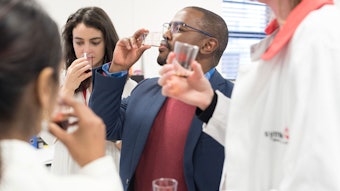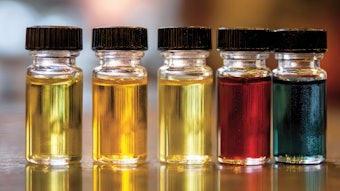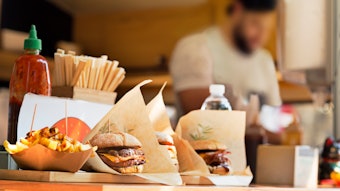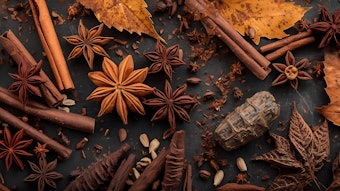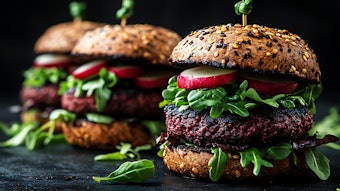
Perfumer & Flavorist+ [P&F+]: What led you to the flavor industry?
Steve Askew [SA]: It sort of found me. I graduated from UMBC in 1990 with a degree in biochemisty and molecular biology and no real direction. Unbeknownst to me, my father had asked a friend to arrange a summer job, which would provide me with some exposure to the food industry. I had the opportunity to work in a dual role as a compounder in a flavor development laboratory, as well as with a team run by an R&D flavor chemist who developed topical snack seasonings. By the end of that summer, I was offered my first permanent position in the flavor industry, and since then, I could not think of doing anything else for a living.
P&F+: For what applications do you formulate primarily, and do you have a favorite?
SA: I consider myself a generalist and enjoy working with a variety of flavors for all kinds of applications. However, much of my work is in savory application and includes the use of herb, spice and botanical extractives, along with Maillard reaction-based flavors.
I am well versed in sweet brown flavor compositions, like maple, caramel and chocolate, as well as vanilla extract, compounded vanilla flavors, citrus and other fruit flavors.
While no specific application is my favorite, I feel that the chance to work across a broad spectrum adds to the pleasure of the job.
P&F+: What advice do you have for people entering the field?
SA: Learn as much and from as many folks as you can. Read about the history of the flavor industry and keep a pulse on current happenings. Most of all, ask lots of questions of your mentors. Being curious and having a thirst for knowledge of what smells and tastes good, and why a flavor performs well in one application and not so well in another, will serve you well. Study the formulas while compounding, and do not be afraid to question why an ingredient was selected as part of a flavor.
Get your hands dirty and volunteer to do the grunt work. The hands-on stuff leaves a strong impression of what you learn in the process, and it makes for great story telling years later.
P&F+: How has the job of flavor chemist changed during your career?
SA: The use of computers and high-tech electronics has grown exponentially since my first days in 1990. Analytical instruments often used for flavor work (GC, GC/MS, HPLC, etc.) existed when I began my career, but they were not as accessible to flavor lab personnel. Also, data collection took much longer than it does now. The instruments continue to be improved and honed for analyses of materials specific to our industry.
Another big difference from 30 years ago is the number of “boxes to be checked” for flavors and their applications, along with regulatory requirements. Its solubility and whether the flavor is natural is just the tip of the iceberg. Non-GMO, organic, paleo, etc. were not on the radar three decades ago, but in today’s industry, they are everyday restrictions.
P&F+: What is the best part of your job?
SA: I like the challenge of making flavors work, from concept to creation or duplication, to compounding, to sale, to production size manufacturing and knowing my customer is satisfied at both the sensory and regulatory levels. Getting to the bench in the lab and working directly with my colleagues on the production floor to troubleshoot are some of my favorites.
Since the game changes all the time, my work is never boring. Also, there are some great, interesting people in this industry. I met my closest friend and wife, also a flavor chemist, at my first job, and our daughter works with me currently, following the family tradition as a flavor chemist. How cool is that?
For the full article, please check out the Perfumer & Flavorist+ November 2021 issue.



